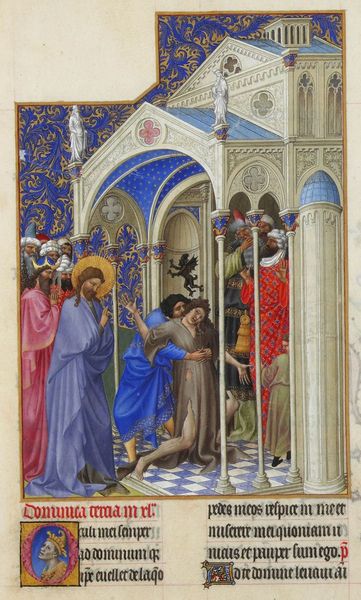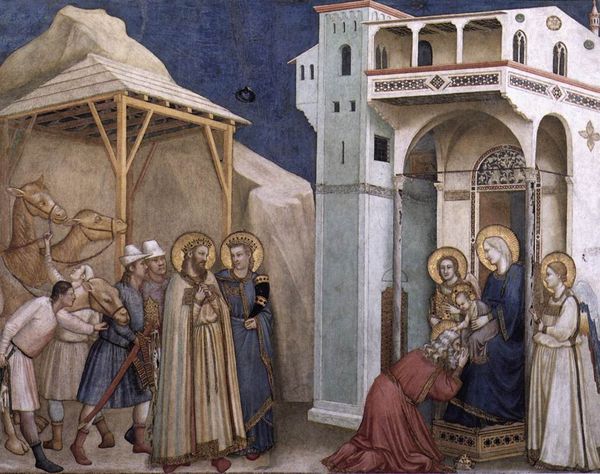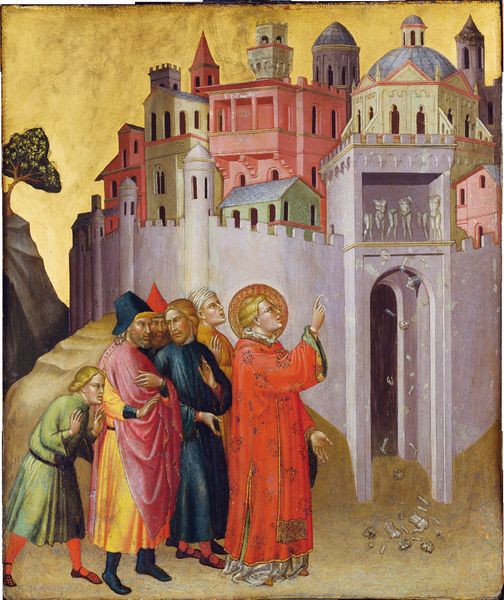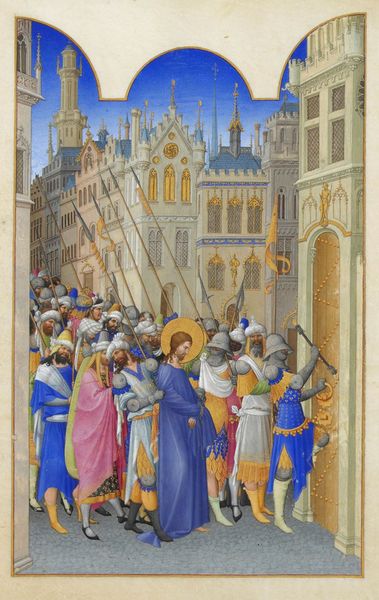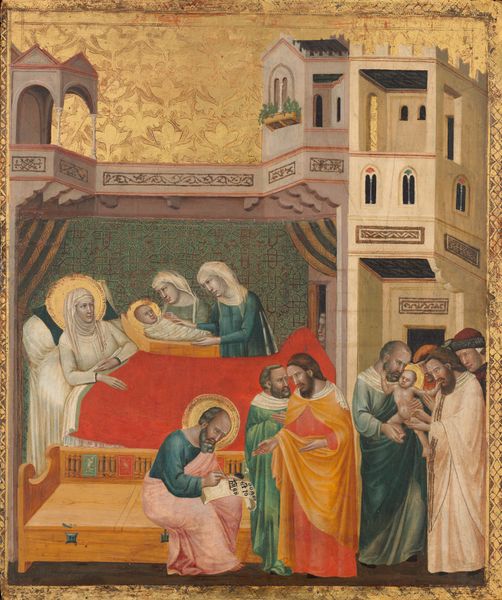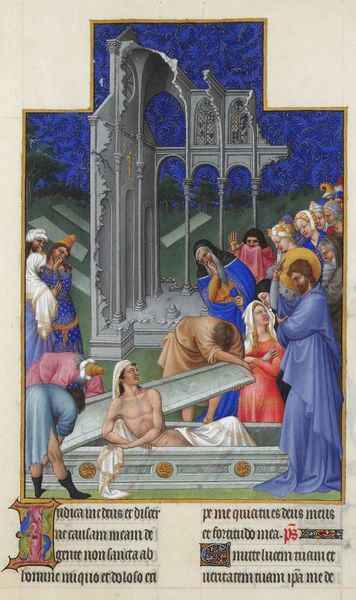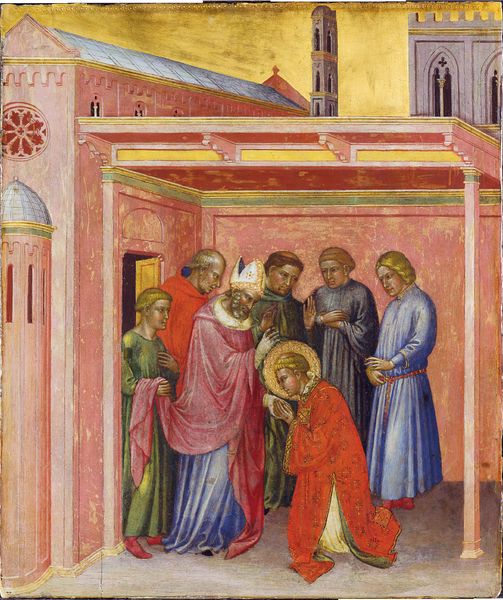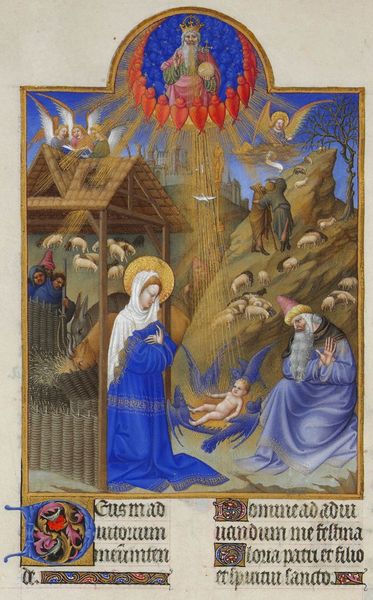
tempera
#
medieval
#
narrative-art
#
tempera
#
figuration
#
history-painting
#
international-gothic
#
miniature
Copyright: Public domain
Editor: This is "The Entry into Jerusalem," a tempera miniature likely by the Limbourg brothers. It depicts Jesus riding into the city. It feels very… regal. The colors are bright, and there’s so much detail in the architecture. What do you see in this piece? Curator: Beyond the literal depiction of Jesus entering Jerusalem, I see a careful construction of power, tradition, and perhaps, an assertion of cultural memory. The golden halos surrounding the figures evoke divine authority. Notice how the architecture isn't strictly Roman, but rather a fantastic, almost dreamlike rendering of a walled city. Editor: A dreamlike rendering… that's interesting. So, it's not trying to be historically accurate? Curator: Not necessarily. It is trying to convey meaning and evoke emotions through visual cues. Look at the man in the tree, hacking off a branch. It’s a very particular, almost anxious, detail. How do you think that detail enriches the image? Editor: Maybe it symbolizes the people's eagerness to welcome Jesus, a desire to prepare a path for him, no matter the cost? Curator: Precisely. It signifies a culture ready to embrace a new idea, potentially challenging the existing structures represented by the fortress-like architecture. Do you notice any specific gestures the crowd uses to greet him? Editor: Yes, there are crowds around, but the lack of depth makes everyone seem equally important. Almost like a mosaic of faces. Curator: Yes! Everyone has an important part in the memory. Even now. The artist has deliberately crafted it as a tableau of cultural anticipation. So, by capturing this iconic biblical story, they're tapping into a well of shared values. Editor: I see what you mean. It's not just a picture; it’s a statement of shared beliefs. Curator: Exactly. These carefully constructed images become lasting visual narratives that resonate even centuries later. Editor: That’s a perspective I hadn’t considered. Thanks for clarifying how symbols can shape cultural memory.
Comments
No comments
Be the first to comment and join the conversation on the ultimate creative platform.
